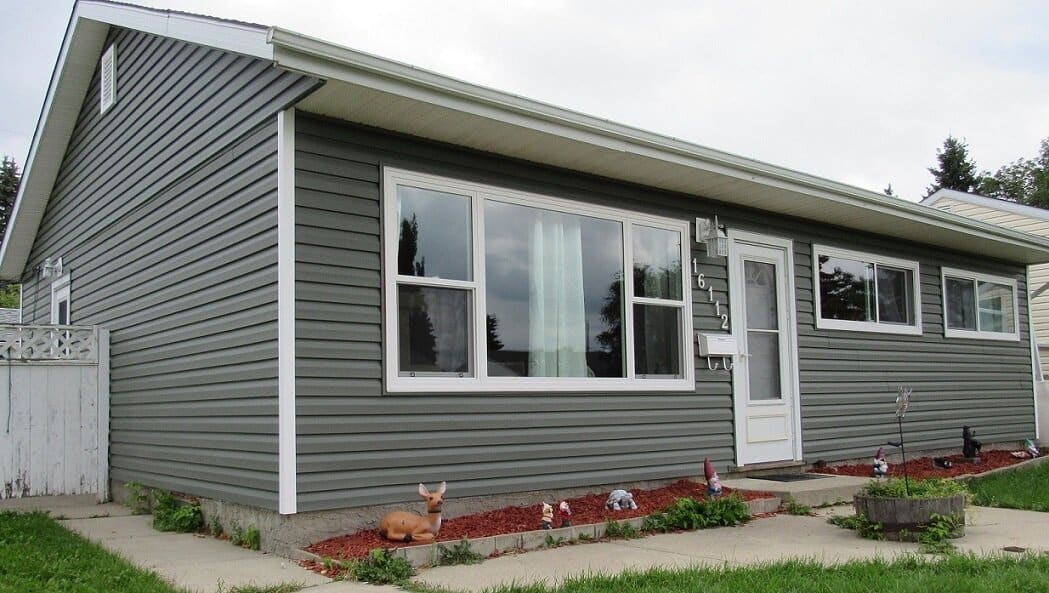
How To Paint Vinyl Siding?
Are you looking for tips on how to paint vinyl siding? While painting your sidings can seem overwhelming, especially if you have never painted before, you can do it with the proper planning, painting supplies and equipment, and the correct painting techniques.
Vinyl siding is popular among homeowners who wish to protect their roofs from changing weather conditions. They provide more than just durability; vinyl sidings can add curb appeal to your home. However, external factors such as sunlight, rain, and hail storms, can cause the color on the sidings to fade over time and need painting work to maintain their aesthetic appeal.
While painting the vinyl sidings might seem intimidating, professional assistance can do wonders. If you wish to do the painting work yourself, we have accumulated some tips in the blog below.
However, before initiating the painting work, it’s crucial that you remove the withering paint so that the new coat sits appropriately on your vinyl surface.
Table of Contents
How to Get Paint off Vinyl siding?
It can be a pain to remove the existing paint, even worse if you have a vinyl floor. Here is how to get rid of paint on vinyl –
Step 1 – Vacuum the area
The first step is to use a hard bristle brush attachment to vacuum up as much paint as possible. If you don’t have one, a regular brush or broom will suffice.
Step 2 – Cleaning With Solvent
Use a solvent explicitly used for cleaning vinyl surfaces, as other solvents, such as turpentine or mineral spirits, can damage them by breaking down plastic resins.
Step 3: Wipe away Residue
Use a soft cloth or paper towel to wipe off any remaining paint from your vinyl sliding door.
How To Paint Vinyl Siding?
Choose A Vinyl Siding Paint Color
As there are vibrant color options to choose from, finding the color that goes well with your exteriors can be a bit perplexing.
To initiate your search, you can look for colors that complement your roof or any brick on the facade. Also, look for homes with the same fixed feature colors to help envision a new look for your home.
Even climate and neighborhood constraints can help you narrow down the search. You should prefer going for lighter colors as they absorb less heat and will keep the temperature under control.
Darker colors, on the other hand, retain more heat and, in turn, leave the siding vulnerable to premature warping and other maintenance problems.
Use a vinyl siding paint that goes well with the vinyl surface
Even if you find it tempting to purchase a low-cost, easily available paint, it’s better to take your time to find the paint that sits nicely on the vinyl. It’s scientifically proven that the paint contains acrylic and urethane resins to accommodate the expansion and contraction of vinyl siding and help the coating last longer.
Check the weather forecast for painting day
If you choose to paint on a day when the weather conditions are extreme, it may not last long. While it may look good in the short run, paint applied on a hot, humid, or windy day may be prone to cracking and flaking over time.
So before going outside to paint your vinyl siding, check the weather forecast for your area. A mild temperature, low relative humidity, and an overcast sky are ideal conditions for painting your vinyl sidings.
Prepare the vinyl surface
Before initiating the painting work, you should remove all the mold, mildew, chalky buildup, and debris from the surface.
To get the best results, make a cleaning solution that contains –
- 2/3 cup powdered household cleaner
- 1/3 cup of laundry detergent
- 1-quart liquid laundry bleach
- 1-gallon water
Choose a cloth or a soft-bristled brush to apply the cleaning solution and rinse off any remaining residue. Make sure that you allow enough time for the siding to dry completely before proceeding any further.
Apply primer if necessary
Before applying the paint, you will need a primer to ensure the paint has good adhesion. Use a primer if the siding surface is not uniform and has signs of deterioration or severe weathering. You can take the paint manufacturer’s advice if you are unsure whether to use a primer.
Remember that paint adheres to the layer directly beneath it, whether bare siding or primer. If you use a primer, ensure the paint is designed to stick to it.
Apply two coats of vinyl paint
It is also important to know “How much to paint the vinyl siding?” Usually, two coats of paint are enough and give the desired look.
Once the primer is dry, use a roller or a paint sprayer to apply the paint. You can use brushwork for corners and edges for a better finish. Coat the entire surface evenly, ensuring that you do not apply too much paint in any one region.
Before proceeding to the second coat, allow the paint to dry. The second coat must be allowed to dry completely (at least 24 hours) before the project can be considered finished.
Though two coats are sufficient, this isn’t always the case. After the second coat of paint has dried completely, check the appearance to see if an additional coat is required.
While DIY techniques may work for a painting job that does not need much work initially, choosing a professional in more complex cases of painting the vinyl siding work is always good.

